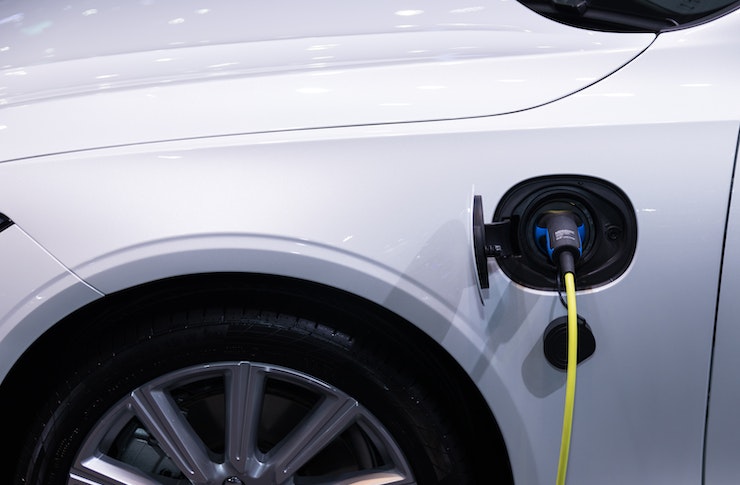Installing EV Chargers in New Homes: A Complete Guide
Electric vehicle adoption is accelerating rapidly, and new homeowners are increasingly considering EV charging infrastructure from the start. Installing an EV charger during the home construction phase offers significant advantages, including cost savings, seamless integration, and future-proofing your property. This guide explores everything you need to know about incorporating EV charging solutions into new residential builds, from planning and electrical requirements to cost considerations and available options.

The transition to electric vehicles is reshaping how we think about home infrastructure. For those building or purchasing new homes, planning for EV charging capabilities has become as essential as considering internet connectivity or energy efficiency. Understanding the options, requirements, and benefits of installing EV chargers during new home construction can help homeowners make informed decisions that serve them for years to come.
Why Consider EV Chargers for New Home Construction?
Integrating EV charging infrastructure during the building phase offers numerous advantages over retrofitting later. Construction provides the ideal opportunity to run electrical wiring, install appropriate circuit breakers, and position charging equipment without disrupting finished walls or landscaping. Builders can coordinate with electricians to ensure proper load calculations and panel capacity from the outset. Additionally, many jurisdictions now require EV-ready electrical provisions in new residential construction, making early planning not just convenient but potentially mandatory. Installing charging capability during construction typically costs 30-50% less than retrofitting an existing home, as electrical work can be completed alongside other construction activities without additional labor for wall removal or repair.
What Types of EV Charging Systems Work Best for New Homes?
Homeowners have several charging options to consider when building new homes. Level 1 charging uses standard 120-volt household outlets and requires no special installation, though it provides the slowest charging speeds at roughly 3-5 miles of range per hour. Level 2 charging systems operate on 240-volt circuits, similar to electric dryers or ovens, and deliver 25-40 miles of range per hour, making them the most practical choice for residential installations. These systems require dedicated circuits with 40-60 amp capacity and professional installation by licensed electricians. Smart chargers with WiFi connectivity, scheduling features, and energy monitoring capabilities have become increasingly popular, allowing homeowners to optimize charging times and track electricity usage. Some advanced systems integrate with home energy management platforms and solar panel installations, enabling homeowners to charge vehicles using renewable energy and minimize grid dependence during peak rate periods.
How Should Electrical Infrastructure Be Prepared in New Homes?
Proper electrical planning forms the foundation of successful EV charger installation in new construction. Builders should ensure electrical panels have sufficient capacity to handle EV charging loads, typically requiring 200-amp service or higher for homes with multiple high-draw appliances. Dedicated circuits should be installed with appropriate wire gauge, usually 6-gauge copper wire for 40-amp circuits or 4-gauge for 50-60 amp installations. Conduit placement matters significantly, as running conduit from the electrical panel to the garage or parking area during construction allows for easy future upgrades or charger replacements. Location considerations include proximity to where vehicles will park, protection from weather elements, and accessibility for cable management. Many builders now install NEMA 14-50 outlets as a cost-effective EV-ready solution, providing flexibility for homeowners to choose their preferred charging equipment later. Working with electricians familiar with EV charging requirements ensures compliance with National Electrical Code standards and local building regulations.
What Are the Cost Considerations for EV Charger Installation?
Understanding the financial aspects of EV charger installation helps homeowners budget appropriately during new home construction. Equipment costs vary significantly based on features and capabilities, while installation expenses depend on electrical work complexity and local labor rates. Planning for these costs during the construction phase typically results in better overall value compared to post-construction retrofitting.
| Charging Solution | Equipment Cost Range | Installation Cost Range | Total Estimated Investment |
|---|---|---|---|
| Basic Level 2 Charger | $300 - $600 | $400 - $800 | $700 - $1,400 |
| Smart Level 2 Charger | $500 - $1,200 | $400 - $800 | $900 - $2,000 |
| Premium Smart Charger | $800 - $1,500 | $500 - $1,000 | $1,300 - $2,500 |
| EV-Ready Outlet Only | $50 - $150 | $300 - $600 | $350 - $750 |
| Hardwired Installation | $400 - $1,000 | $600 - $1,200 | $1,000 - $2,200 |
Prices, rates, or cost estimates mentioned in this article are based on the latest available information but may change over time. Independent research is advised before making financial decisions.
Installation costs during new construction typically fall on the lower end of these ranges since electrical work integrates with ongoing building activities. Many utilities and government programs offer rebates or incentives for EV charger installation, potentially reducing net costs by $200-$1,000. Homeowners should research available programs in their area and verify eligibility requirements before finalizing installation plans.
What Incentives and Requirements Apply to New Home EV Chargers?
Various financial incentives and regulatory requirements affect EV charger installation in new residential construction. Federal tax credits may apply to charging equipment purchases, though eligibility criteria and credit amounts change periodically based on current legislation. State and local utility companies frequently offer rebates ranging from $200 to $1,000 for residential EV charger installation, with some programs specifically targeting new construction projects. Building codes in many regions now mandate EV-ready electrical infrastructure in new homes, requiring builders to install conduit, panel capacity, and sometimes dedicated circuits even if chargers are not immediately installed. California, for example, requires all new homes to include EV-ready electrical capacity, while other states have adopted similar provisions or are considering them. Homeowners should consult with builders, electricians, and local authorities to understand applicable requirements and available incentives in their specific location.
How Can Homeowners Future-Proof Their EV Charging Setup?
Future-proofing EV charging infrastructure during new home construction ensures long-term flexibility and value. Installing higher-capacity circuits than currently needed accommodates faster-charging vehicles and potential multiple EV ownership. Running additional conduit to parking areas, even without immediate wiring, creates pathways for future expansion at minimal cost. Selecting electrical panels with extra breaker spaces allows for system upgrades without panel replacement. Smart chargers with updateable firmware adapt to evolving charging standards and utility rate structures through software updates. Considering potential solar panel integration during electrical planning enables future renewable energy charging capabilities. Some homeowners install multiple charging locations, preparing for households with multiple electric vehicles or accommodating guest charging needs. These forward-thinking approaches add modest costs during construction but provide substantial flexibility and avoid expensive retrofitting as EV technology and household needs evolve.
Conclusion
Incorporating EV charging infrastructure into new home construction represents a practical investment in modern living and sustainable transportation. By planning electrical systems appropriately, selecting suitable charging equipment, and taking advantage of available incentives, homeowners can seamlessly integrate EV charging capabilities that enhance property value and support long-term transportation needs. The relatively modest costs during construction, combined with the convenience and future-proofing benefits, make EV charger installation a worthwhile consideration for anyone building or purchasing a new home in today’s evolving automotive landscape.




